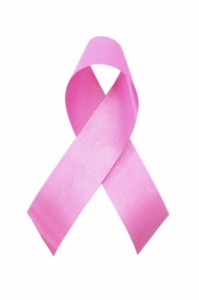Warning Signs and Symptoms of Breast Cancer
 Americans across the country have embraced October as Breast Cancer Awareness month. Many of us spend the month of October wearing pink bracelets, signing-up for 5K runs, and watching professional athletes incorporate pink gear into their uniforms. Our heightened level of awareness and consideration of breast cancer and research funding is essential to finding a cure, but how many of us spend time in October considering our own health and potential risk for being diagnosed with the disease? This October, continue to wear your pink accessories and donate to your local fundraisers, but in honor of breast cancer awareness month, learn the warning signs and symptoms of breast cancer so that you can remain healthy too.
Americans across the country have embraced October as Breast Cancer Awareness month. Many of us spend the month of October wearing pink bracelets, signing-up for 5K runs, and watching professional athletes incorporate pink gear into their uniforms. Our heightened level of awareness and consideration of breast cancer and research funding is essential to finding a cure, but how many of us spend time in October considering our own health and potential risk for being diagnosed with the disease? This October, continue to wear your pink accessories and donate to your local fundraisers, but in honor of breast cancer awareness month, learn the warning signs and symptoms of breast cancer so that you can remain healthy too.
Signs and Symptoms
Thanks to advances in mammography screenings, most breast cancers in the United States are identified at an early stage before symptoms are visible. Still, not all cases of breast cancer are identified through mammograms, which is why it is important to understand the warning signs so that care can be sought as soon as possible. While symptoms can vary among women, the most common signs include:
- A lump, hard knot, or thickening inside the breast or underarm area.
- Swelling, warmth, redness or darkening of the breast.
- Isolated pain in the breast that does not go away.
- A change in the size or shape of the breast.
- A dimpling or puckering of the skin of the breast.
- A suddenly appearing nipple discharge, or a liquid leaking from your nipple, especially if it appears only in one breast, when no squeezing or pressure is applied to the breast, or if the discharge is bloody or clear, rather than milky.
- Itchy, scaly, or sore skin on the nipple, or a nipple rash.
- Pulling in of the nipple or other breast skin.
When conducting a self-breast exam, pay special attention to the presence of lumps or bumps, but understand that breast tissue is naturally textured, and some women’s breasts have more naturally occurring bumps than others. Look for an even and consistent amount of lumpiness throughout both breasts to determine if what you are feeling is your normal breast tissue, or something you should question. If you do find one isolated area with a solid, hard lump, take note and speak with your OBGYN or primary care doctor. By conducting routine exams on a monthly basis, you will be more in tune with your body in case you have a sudden, newly appearing lump that may be of concern.
When to Seek Care
Contact your OBGYN or primary care doctor if:
- You identify a lump that was not present during your prior month’s self exam or that you know is newly developed.
- You find a lump or a bumpy area on one breast that does not feel similar to your other breast.
- You find a lump or bumpy area on one breast that does not feel similar to the rest of the tissue on that same breast.
It is always in your best interest to seek guidance from a health care professional if you have any concerns about the signs or symptoms listed above. While your OBGYN may tell you that what you’ve found is normal, or that it is a benign breast condition such as a cyst or fibroadenoma, having the peace of mind of knowing that you are healthy will be well worth the exam.
More